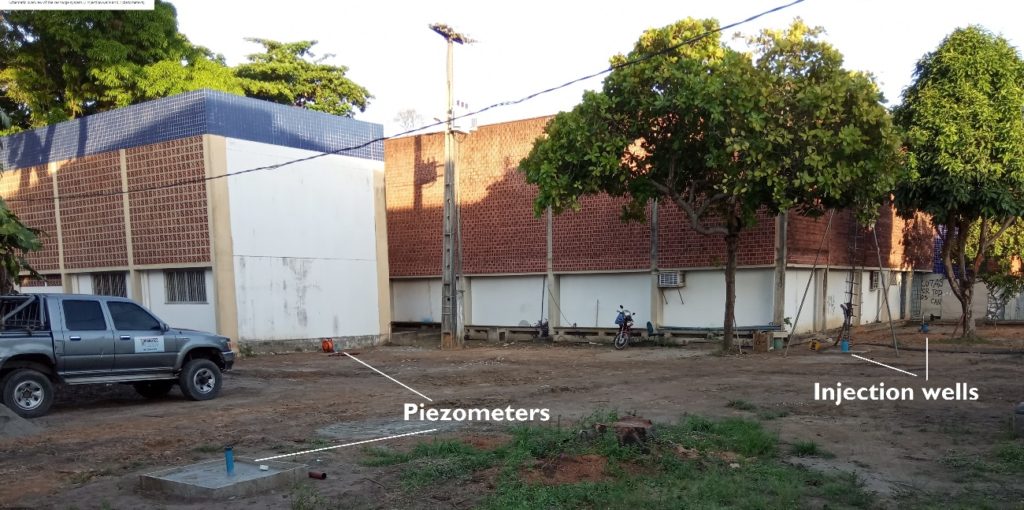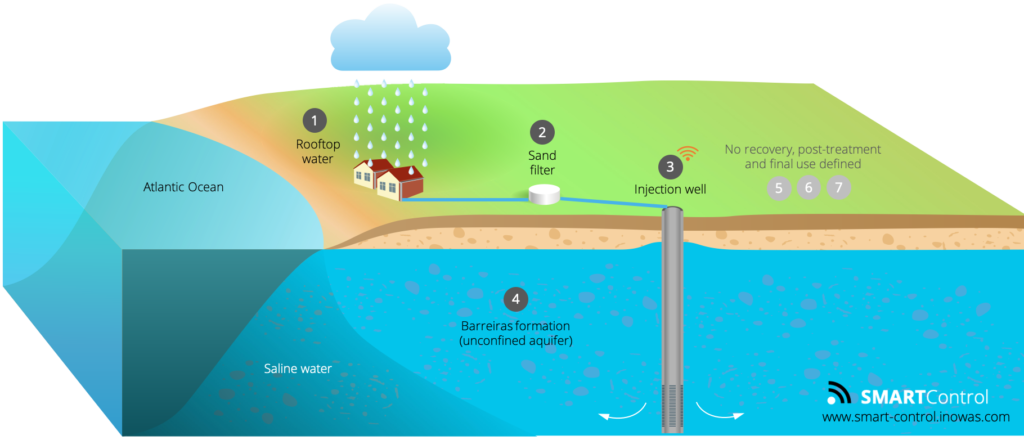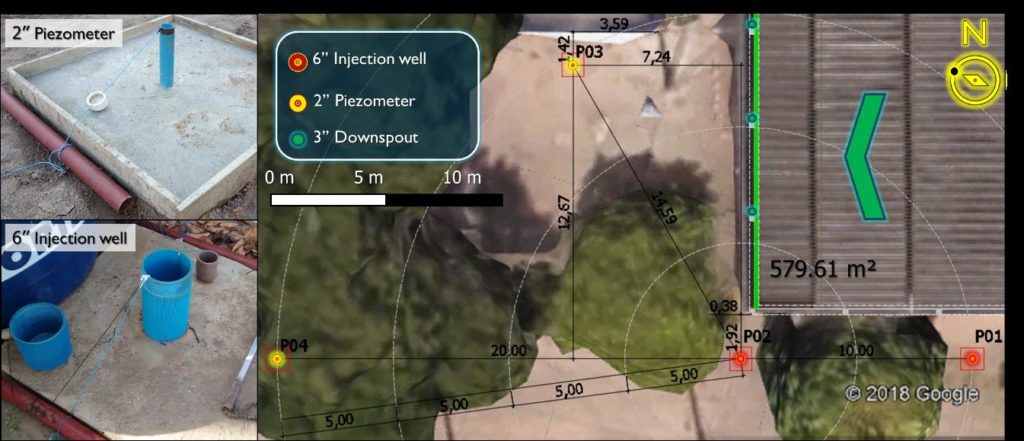The pilot MAR scheme in João Pessoa, Paraiba (BRA1) consists of one ASR well to mitigate extreme climatic events through rainwater harvesting and infiltration into the unconfined aquifer. As no monitoring system exists so far, a RMCS will be installed within SMART-Control to monitor basic operational and water quality parameters.

João Pessoa (Paraíba, Brazil) is a coastal city with a tropical climate and mean annual rainfall of 2,145 mm, concentrated from March to June. Precipitation is a key factor for water resources management in the João Pessoa Metropolitan Region, being the main responsible for groundwater recharge in the urban area. Water demand (three quarters made of irrigation water demand) and availability are strongly influenced by annual rainfall. On the other hand, the large proportion of impervious surfaces in the urban area restricts the natural recharge, contributing towards runoff generation that leads to frequent flooding and flooding-related losses in the city. The great availability of roofs represents a major opportunity for the implementation of rainwater harvesting systems in the region, contributing to groundwater recharge and flooding risk reduction. These benefits are expected to draw the attention of stakeholders on the potential of MAR in mitigating water-related issues and promote the implementation of other MAR schemes in the region.
The MAR components of the João Pessoa system are summarized below:
- Capture zone: Rooftop rainwater
- Pre-treatment: Filter
- Recharge: Well recharge by gravitation
- Subsurface: Barreiras formation (unconfined aquifer)
- Recovery: none
- Post-treatment: none
- End use: Non-potable by other users

The recharge system, located on the campus of the Universidade Federal da Paraíba (UFPB), consists of two 6’’ diameter injection wells which are 10 meters apart from each other and whose maximum measured recharge rate was roughly 12 m³/h (283.2 m³/d). Two 2’’ diameter piezometers are present for monitoring purposes. Each well has a depth of 42 meters, whose screen ranges from 28 to 40 meters. The capture zone consists of rainwater collected on the rooftop of the UFPB’s Hydraulics Laboratory, with a surface area of about 580 m². Currently, preliminary studies are carried out to assess if a larger area can be used as the capture zone, since there are other buildings available in the surroundings. The catchment area is connected to gutters and downspouts which destine the runoff to the public drainage system of João Pessoa. This existing system will be modified in order to divert the runoff into the recharge system. A pre-treatment stage is being studied to secure the source water is adequate to meet the groundwater quality and prevent clogging issues. Before being introduced into the aquifer, an interim storage (water tank) will be installed to store the excess water from extreme events, which can be used to recharge the aquifer on a larger basis. The operational approach is to inject as much rainwater as possible. Yet overflow will occur and these will be monitored and redirected to the public drainage system.

The MAR facility is currently only monitored manually and within SMART-Control, continuous monitoring using the RMCS will be setup. The specific objectives are to continuously monitor the effect of MAR on flooding mitigation and to monitor the efficiency of the recharge system for long term injection of clean water in relation to well clogging. Laboratory analysis of source water and groundwater will be run in parallel.